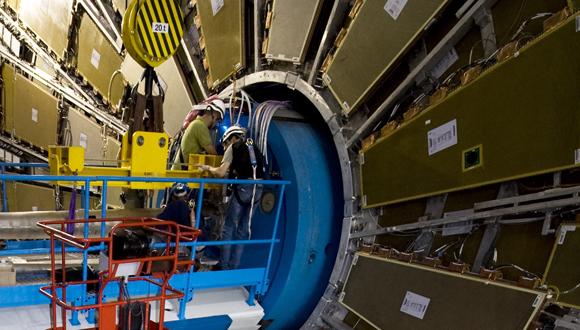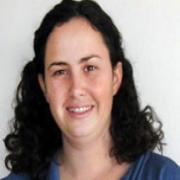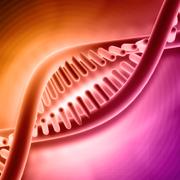Tel Aviv University and the God Particle
TAU scientists played an integral role in the recent discovery of the Higgs Boson, an elementary particle, invisible even to microscopes, that “gives mass” to everything in the universe.
The biggest moment for physics in nearly two decades just arrived. On July 4, 2012, scientists at the European Organization for Nuclear Research (CERN) in Switzerland celebrated what they believed to be the end of a 30-year hunt for the elusive Higgs boson, commonly referred to as the “God Particle.” At the same time, a group of eight senior scientists, one technician and dozens of graduate students from Tel Aviv University popped open a bottle of champagne in recognition of their extensive contribution to the search.
“This important finding provides confirmation to those of us who believed in the particle’s existence without ever seeing it,” says Prof. Halina Abramowicz, part of the TAU team. “The discovery of the Higgs-like particle affirms the world view that the universe is made up of straightforward, symmetrical laws and that humans are the byproduct of disruptions in that symmetry.”
Working closely with Professors Gideon Bella, Erez Etzion and Avner Soffer from the Sackler School of Physics and Astronomy, Abramowicz analyzes data from CERN’s Large Hadron Collider (LHC) – the world’s largest and highest-energy particle accelerator designed to simulate the particle collisions of the Big Bang. The main purpose of the LHC is to test a collection of equations, known as Standard Model theory, explaining the fundamental constituents of matter and the forces holding it together. Until now, the Higgs was an important missing piece of the Model.
Theoretical physicist Dr. Tomer Volansky, a new young faculty member at the Sackler School of Physics and Astronomy, is also an integral member of the TAU team. He writes and develops theories to help researchers identify new particles and interactions that both shed light on and go beyond the Standard Model. “With more than 600 million particles colliding every second, one of the toughest problems for experimental physicists, such as Prof. Abramowicz, is sifting through vast amounts of data. That’s where theorists like me come in,” explains Volansky. “We tell the experimentalists what to look for and once they find something significant, they return to us for ways to explain the phenomenon.” The interplay between theoretical and experimental physicists is therefore crucial for the success of the project.
Why Matter Really Matters
Not only does the TAU physicists’ research significantly contribute to basic scientific understanding of the structure of the universe, it also has important practical applications. In order to construct the world’s largest and most expensive particle accelerator, scientists have had to develop new, state-of-the-art technologies. “We have had to push the limits of industry,” explains Abramowicz. “As in the past, the technology that researchers helped develop for the LHC could lead to major advancements in medicine and energy efficiency.”
For example, it is possible to accurately direct and manipulate beams of protons, particles like the ones accelerated in the LHC. This means that scientists can calculate where a proton of a given energy will stop inside the human body. Doctors at the Paul Scherrer Institute in Switzerland have already begun to treat patients with melanoma of the eye using these maneuverable particles. They can attack tumors without destroying the entire eye, something that is not possible with standard radiation therapy. The success rate of this treatment is 95%.
What’s more, in order to accelerate subatomic particles to energies of 7 trillion electron volts apiece and then smash them together, researchers had to develop powerful super conducting technologies. The potential of this technology to revolutionize the world’s electricity grid is immense. It would provide 30% more energy than traditional sources.
“We are making history right now,” maintains Abramowicz. “With the discovery of the Higgs, we move deeper into new, unchartered territory.”
TAU faculty involved with the project include Professors Emeriti Gideon Alexander, Odetter Benary, and Yona Oren as well as Professors Halina Abramowicz, Gideon Bella, Erez Etzion, Avner Soffer, Dr. Yan Benhammou and Dr. Tomer Volansky. Meni Ben Moshe served as the technician.






